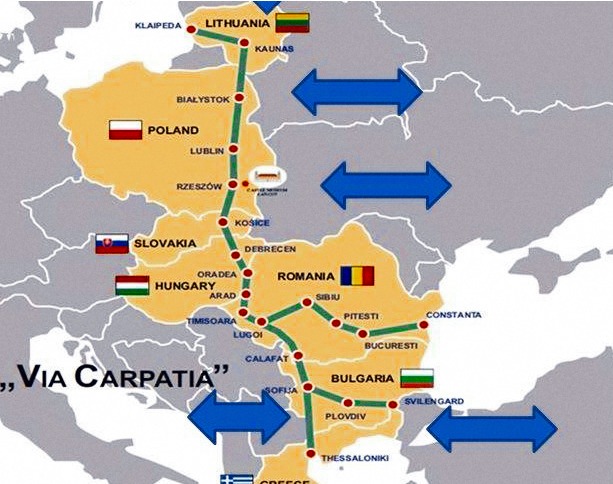A major highway project known as Via Carpatia, designed to connect major countries running from Lithuania to Greece, is seen as an investment that could transform the region.
“Via Carpatia is a transport axis the construction of which is not only a priority for Poland but for many countries within its reach,” said the Polish transport minister Andrzej Adamczyk
Speaking at the Economic Forum during the transport panel, Adamczyk emphasized that the investment in Via Carpatia was compatible with the European network TEN-T, which is to be realized by 2030.
“Via Carpatia is not the only transport axis as it is not just an ordinary highway or expressway but a vital artery. As the Greek president told us at the last Three Seas summit in Sofia, Via Carpatia for Greece is a highway to life,” said the minister.
Adamczyk explained that Via Carpatia is a series of interlinked connections which can act as a motor for economic development in the eastern and southern parts of Europe. It is a project which will be factored in by all other transport projects in the region.

The Polish transport minister noted that 710 kilometers of the S19 road, which will be the backbone of Via Carpatia, will run through Poland and that some parts of that artery are already in place and others will be finished in the next few months. He hoped that the Polish part of Via Carpatia would be finished by the turn of 2025/2026.
Adamczyk appealed for greater attention and priority to be given to the Rail Carpatia project. He said he was in talks with ministers from the Baltic states, Hungary, Bulgaria and Greece to move that project forward.
Via Carpatia is to run from Klajpeda and Kowno in Lithuania, through Bialystok, Lublin and Rzeszow in Poland, Kosice in Slovakia, Debreczyn in Hungary and onto Romania, Bulgaria and Greece. The route is to reach the Romanian port Constancia on the Black Sea and the Greek city of Thessaloniki on the Agean sea.






